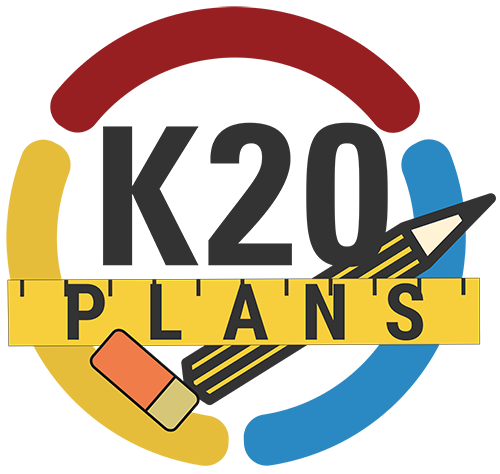Creating a College-Going Culture
A college-going culture provides students with the support and resources to help every student see higher education as an attainable goal.
Attachments
Tags
- College and Career Readiness
- College Preparedness
Domains
- Emotional Engagement
- Perception of Barriers
- Support Scale
- Vocational/Educational Self-Efficacy
- Beliefs about Future Opportunities
- Vocational/Educational Aspirations/Expectations
Abstract
A college-going culture provides students with the support and resources to help every student see higher education as an attainable goal. Research has shown widespread positive impact for students who receive assistance and support through settings that encourage college enrollment and make it accessible. A college-going culture is especially important for students who identify with a minoritized group, future first-generation college students, and students from under resourced communities.
Literature Review
Students benefit from attending a school that encourages them to set and achieve big goals, which includes creating a college-going culture that instills the desire and drive to attend college (College Board, 2017). Based on the literature, there are many approaches and initiatives that may be implemented to establish a college-going culture. The purpose of methods should be to help students understand the nature of college, see the importance of attaining a college education, foster positive perceptions about college, prepare for admission process, and set goals for being ready for college (Radcliffe & Bos, 2013).
A recommendation for facilitating a college-going culture is immersion in campus life through experiences on campus, including simply day trips for campus visits. College immersion generates many positive results related to students’ perceptions and expectations about college, including, importantly, helping them see themselves as college students in the future (Schaefer, 2014; Radcliffe & Bos, 2013). Another great college-going culture recommendation is to offer college courses in high school. Doing so has been shown to increase student involvement in preparation for college (Stewart, 2016). In addition to preparation for traditional colleges, schools can also encourage other types of postsecondary education by promoting community colleges and trade schools, further expanding students’ education and career options after high school.
Creating a college-going culture is especially important for students who may not have postsecondary education on their radar, such as underrepresented minorities, students from low SES families, and those who would be first-generation students (College Board, 2017). College-going cultures can help to lessen the achievement gap between students with greater advantages and those who are underserved (Stewart, 2016).
Applications
Create an Advisory Program
- Create shared structure, procedures, content, goals, and outcomes for all advisors to follow.
- Create or adopt a sequenced, research-based curriculum or programming to implement in the advisory periods. These can include web-based programs, Q&A sessions with college students and college representatives, practice ACT/SAT questions and test taking strategies, and focused research on college and financial aid options.
- Most successful groups are 8-15 same-age students per advisor
- Most productive schedule is daily short meetings (20 minutes) and longer advisories on a regular schedule (45 minutes 1-2 times a month)
- Provide training to all advisors on curriculum, structures of advisory, and best practices of advisors
- Build in an evaluation for advisory period including student perception surveys and college enrollment/acceptance rates
Host College Fairs:
- Host an annual or bi-annual college fair at the high school that includes four year colleges/universities of various sizes, two-year colleges, private schools, and technical schools
- Schedule time during the day for students to visit and extend the fair into the evening for families; provide childcare and translators
- Create a communications plan for the college fair including flyers, letters, newsletters, and electronic communications with spotlights on different colleges/universities/schools in attendance
- Distribute lists of guiding questions for students and families to ask college representatives
- Provide a guidebook or directory of schools in attendance complete with a detailed description, majors, admissions requirements, and cost
Host a College Majors Night:
- Schedule a night of presentations, break-out sessions, and exhibits around college majors (3-5)
- Consider surveying your students on their major of interest and target the most popular majors for the College Majors Night
- Prepare a large-group information session on the basics of selecting a major
- Schedule various break-out sessions with a representative of each major (3-5). Guide the presenters of the break out sessions to include important information about the major such as required courses for the major, kinds of jobs/careers within the major, employment forecast for the major, and any personal experiences of students in the major
- Consider hosting several college majors nights per year depending on student interest and group them into themes (e.g., Healthcare; STEM; Humanities)
Create a Visible College Going Culture:
- Survey the students on their perceptions of the school's college going culture
- Hang posters, brochures, and pennats of colleges and universities throughout the school
- Encourage staff members to wear college apparel on assigned days
- Visibly share where staff members received degrees
- Offer SAT/ACT preparation classes during the school day or integrate into existing curriculum
- Create a college corner for students and families with information on scholarships, financial aid, and applications
- Host college-focused parent nights on topics such as preparing for admissions tests, obtaining financial aid, transitioning to college life, living in a dorm, and planning for a career
- Celebrate students' acceptances in college publicly in the hallway or on social media
- Host professional learning options for teachers on helping students write college essays, writing letters of recommendation, and college counseling
For additional details on Creating a College Going Culture:
Citations
Radcliffe, R. A., & Bos, B. (2013). Strategies to prepare middle school and high school students for college and career readiness. The Clearing House: A Journal of Educational Strategies, Issues and Ideas, 86(4), 136-141.
Schaefer, M. B. (2014). Facilitating college readiness through campus life experiences. RMLE Online, 37(7), 1-19.
Stewart, P. (2016). Great expectations: A cradle-to-college project in East Los Angeles shows early success in eliminating education gaps. Diverse Issues in Higher Education, 33(24), 16

